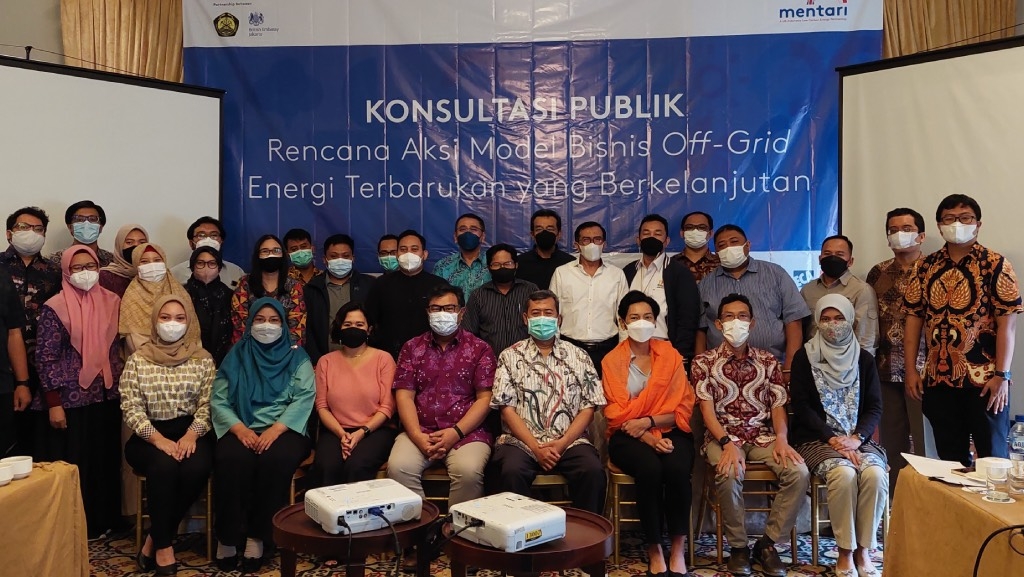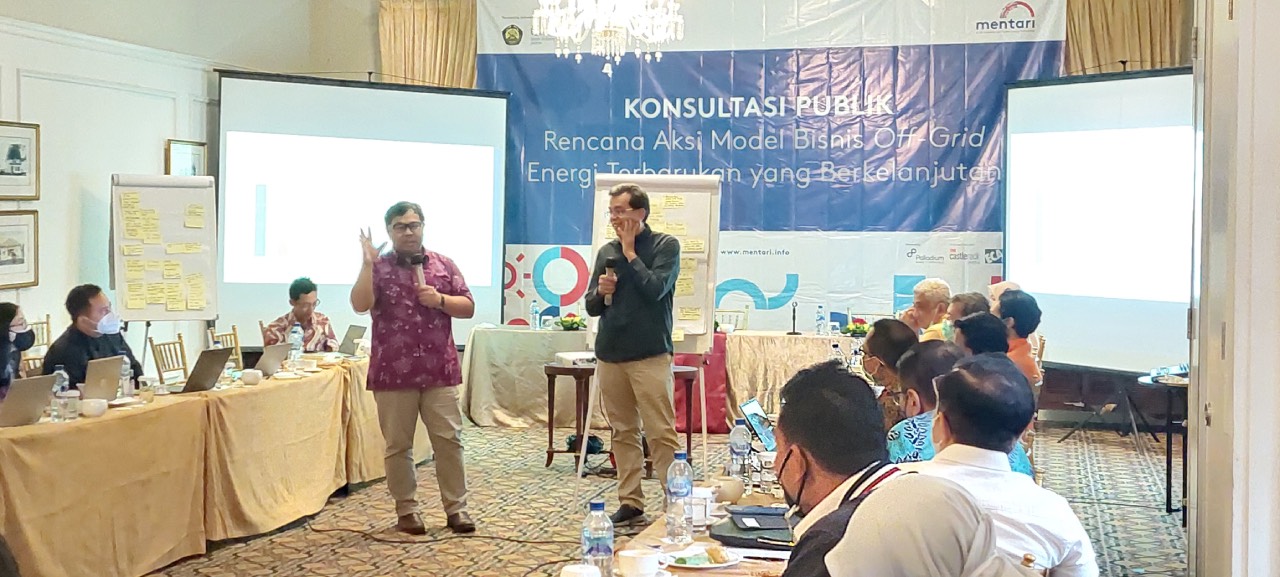Background
Last mile electrification is a difficult undertaking irrespective of its geographical context. Nevertheless, it faces additional challenges when executed in an archipelago such as Indonesia, where a limited supply of parts and equipment, low energy demand, and future growth uncertainty impact its successful implementation. Although Indonesia achieved a 99.4% electrification ratio in 2021, 466 thousand households in 316 villages remain without access to clean and affordable electricity (Ministry of Energy Mineral Resources/MEMR, 2021).
On July 6, 2022, the UK-Indonesia Programme, MENTARI, conducted a public consultation on the regulatory process to deliver rural electrification through different business models, particularly Micro Independent Power Producer (Micro-IPP) and Joint Operation or Kerja Sama Operasi (KSO). Given the increasing need to accelerate the uptake of off-grid systems, the forum discussed different stakeholder viewpoints. It highlighted vital areas of work: (1) supportive regulation (including the business area permits and regulatory framework for new business models), (2) sustainable tariffs and the need for a new subsidy mechanism, (3) commercial issues, and (4) transparent public data. The panel agreed that there are gaps in the legal and regulatory frameworks for off-grid electrification programs.
Supportive regulation for business models
Obtaining a business area permit under MEMR regulation 38 (2016) is a lengthy and bureaucratic process that has damaged investor and developer confidence. As part of the business model recommendations, the Micro-IPP and KSO models were preferred as neither must hold a business area permit to operate.
Regulatory recommendation
Project owners have learned to work around these models together with PLN; however, no underpinning regulation establishes the proper procedures and mechanisms which would provide clarity and transparency during the development phase of these projects. The panel suggested the following changes:
- For the KSO, the tariff should be defined as a reasonable value to make the project operational.
- For the micro-IPP, the forum agrees to create a separate mechanism that differentiates it from the current IPP, particularly in terms of financing requirements and technical and institutional criteria.
Tariffs
To set a tariff for its project, a developer must first establish whether it needs to compete with the average electricity production costs of PLN (see MEMR Regulation No. 50 of 2017) or not (a grey area between on-grid and off-grid tariff).
Additionally, donor-funded off-grid projects are constrained by a different tariff cap (MEMR Regulation No 12 of 2018). Due to an absence of national off-grid electrification planning and joint programs, many communities using donor-funded systems pay a voluntary fee for electricity. This price is neither regulated nor legalized. This gap highlights the need for an inter-ministerial effort to address subsidies and a fair tariff mechanism to ensure the financial sustainability of these systems.
Tariff recommendation
In terms of tariff structure, the forum agreed that a possible solution is to offer a tariff based on the individual system’s Levelized costs of electricity (LCoE) through a competitive tender. The competitive tender is inherently technology neutral, a marked difference from Indonesia’s current technology-specific requirements. Under this new arrangement, the lowest-cost solution will be awarded. The tariff must also be deemed acceptable by the government according to MEMR 12 of 2017, wherein the tariff is capped below PLN’s average production cost. Additionally, the forum suggested an off-grid tariff regulation separate from the existing on-grid policy, either through an upcoming presidential decree or new MEMR regulation.
Commercial Issue 1: Subsidy mechanism
A new subsidy mechanism was proposed during the discussion. Each subsidized household will be registered by MEMR and the Ministry of Finance (MOF) within specific requirements. Customers will be offered a free-of-charge amount of electricity every month (quota). Excess consumption shall be paid at the tariff agreed between project owners and MEMR. In total, the electricity subsidy will be equal to the subsidized quota per household times the total eligible households. The subsidy is auctioned before the installation, with users agreeing to pay at a specific rate if subsidies are unavailable. In the forum, MOF representatives were open to this mechanism. They requested MEMR to proceed with the calculation of the total estimated allowance for all potential sites to be disbursed from the state budget. The highest risk to this mechanism was the parliament’s approval to include it in the state budget.
Commercial Issue 2: Financing
While private and local banks are limited in supporting off-grid projects, the forum sought alternatives such as direct assignment to companies as a form of corporate social responsibility (CSR). Company participation in off-grid projects will reduce government risks to rural electrification. To enable this change, the government may reconsider a new regulatory framework.
Another natural option is to tender clusters, enabling private developers to bid at lower generation costs by coupling projects and minimizing logistics and procurement costs.
Updates to Renewable Energy Potential
Updates to renewable energy potential and electrification maps will better assess available technology options. The government is encouraged to gather, combine, and analyze the available data to determine the lowest-cost alternative. This can be executed via geospatial information and advanced technology, known as geospatial least cost planning (GLCP).
Conclusion
A nationwide off-grid electrification program will require full support from an array of stakeholders, central and local governments, private sectors and PLN. For this, MEMR can lead off-grid planning while PLN can become a government-appointed supervisor to support, monitor, evaluate and standardize the service offered by off-grid suppliers. At the same time, the local governments can help the process through local political buy-in.








